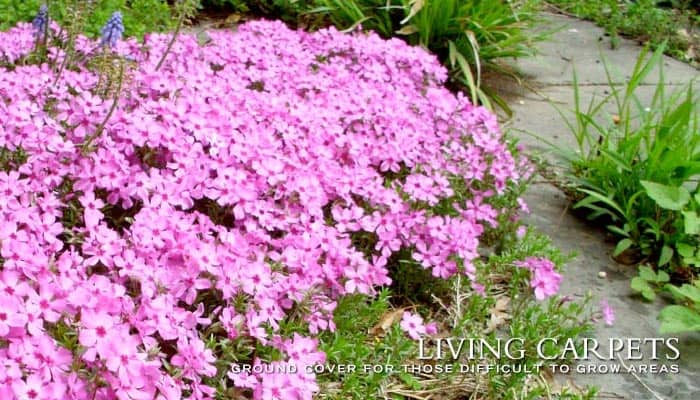If you’re like most East End homeowners, a carpet of classic green lawn is probably part of your landscape. But there are undoubtedly places on your property where the grass just does not thrive, because there’s too much shade, or the soil is too dry, or too wet. Cheer up – there are other ways to cover the ground with greenery, that don’t need mowing or constant fertilizing and watering. These plants cover the ground like living carpets, and they’re terrific problem solvers. Even better, many of them are truly decorative, sporting colorful leaves or pretty flowers, or wafting delicious scents through hot summer air.
Groundcover plants can grow beneath trees and shrubs. They can serve as an alternative to a conventional lawn in challenging places, and some even can be stepped on without a problem. You can use them to cover a slope where it’s hard to mow, or to help control erosion. They can grow along the edges of a path to soften the look. Groundcover plants can handsomely fill in empty spaces between stepping-stones in a path or paving stones in a patio. You can plant them around the edges of a deck or patio. They can spill over the top of a retaining wall, or tuck into small pockets in a dry stone or paver wall. These low growers can even become the carpet in a garden “room” that’s enclosed by hedges or tall plants, to create a quiet place for reading or meditating (just add a bench).
If you’re looking for a lawn alternative that can tolerate being walked on but doesn’t need mowing, try planting aromatic creeping thymes (related to the ones we use in the kitchen) or fresh-scented Corsican Mint in a sunny area—both release their fragrance when stepped upon. And both offer the bonus of tiny lavender to pink flowers in summer. Roman Chamomile also thrives in sunny places, and gives off a fresh apple-like scent under foot. Other candidates for a substitute lawn include Miniature Brass Buttons (Leptinella), Bugleweed (Ajuga) and Kenilworth Ivy (Cymbalaria).
Under trees or shrubs, try Lamium, some of which have silvery leaves and little yellow flowers, Sweet Woodruff, with its clusters of tiny white flowers in late spring, Wild Strawberry, whose tiny fruits are pretty but not tasty. Bugleweed grows in lighter shade or in sun and rewards us with vertical clusters of petite purple flowers. In lighter shade, Creeping Phlox will spread out by means of trailing stems and dress up the area with blossoms of purple, blue or white in spring. Or for a late-summer thrill, edge a path with Ceratogstigma, whose quiet clumps of rich green leaves turn mahogany red late in the season, contrasting beautifully with the dramatic, electric blue flowers that appear just when it seems all that’s left to bloom are Chrysanthemums. In poor, shady soil you could rely on old stalwarts like Pachysandra, Ivy (small-leaved varieties are especially delightful) and Vinca, which in more hospitable conditions can get out of control and cause problems.
In a dry and very sunny place, look to Creeping Thymes, Goldmoss Sedum with its fleshy leaves and tiny yellow flowers, or snow-in-summer (Cerastium), which produces masses of little starry white blossoms above silvery, fuzzy leaves in summer. Trailing types of Euonymus are another possibility.
Groundcovers partner well with stone, too, filling in between paving stones in a path or patio, tucking into niches in a dry stone or paver wall, or spilling over the top of a stone wall to soften the hard edges. To grow in any of these places the plants need to have soil to hold their roots. Scrape out some of the sand used to fill in between stones and replace it with good soil. In a patio, ideally you’d have the soil prepared, as for a garden but with a layer of stabilizing sand on top, before the stones are laid. If you’re looking for plants to tuck into crevices, ask your local nursery or garden center if they carry Blue Star Creeper (Isotoma), Creeping or Woolly Thymes, Kenilworth Ivy, Creeping Jenny (Lysimachia), Irish Moss, Creeping Mazus, with purple flowers in late spring and early summer, goldmoss or other small sedums, or violets.








